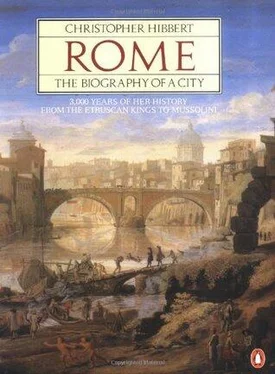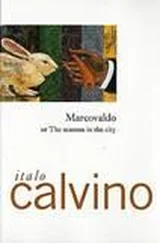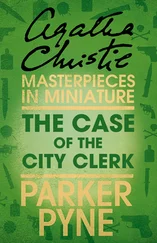Christopher Hibbert - Rome. The Biography of the City
Здесь есть возможность читать онлайн «Christopher Hibbert - Rome. The Biography of the City» весь текст электронной книги совершенно бесплатно (целиком полную версию без сокращений). В некоторых случаях можно слушать аудио, скачать через торрент в формате fb2 и присутствует краткое содержание. Жанр: Культурология, Искусство и Дизайн, на английском языке. Описание произведения, (предисловие) а так же отзывы посетителей доступны на портале библиотеки ЛибКат.
- Название:Rome. The Biography of the City
- Автор:
- Жанр:
- Год:неизвестен
- ISBN:нет данных
- Рейтинг книги:3 / 5. Голосов: 1
-
Избранное:Добавить в избранное
- Отзывы:
-
Ваша оценка:
- 60
- 1
- 2
- 3
- 4
- 5
Rome. The Biography of the City: краткое содержание, описание и аннотация
Предлагаем к чтению аннотацию, описание, краткое содержание или предисловие (зависит от того, что написал сам автор книги «Rome. The Biography of the City»). Если вы не нашли необходимую информацию о книге — напишите в комментариях, мы постараемся отыскать её.
Rome. The Biography of the City — читать онлайн бесплатно полную книгу (весь текст) целиком
Ниже представлен текст книги, разбитый по страницам. Система сохранения места последней прочитанной страницы, позволяет с удобством читать онлайн бесплатно книгу «Rome. The Biography of the City», без необходимости каждый раз заново искать на чём Вы остановились. Поставьте закладку, и сможете в любой момент перейти на страницу, на которой закончили чтение.
Интервал:
Закладка:
there, now we are smashed by a beam, now biffed by a barrel.
Our legs are thick with mud, our feet are crushed by large
ubiquitous shoes, a soldier's hobnail rests on our toe…
Newly mended shirts are torn again. A fir-tree
flickers from the advancing dray, a following wagon
carries a long pine: they swing and threaten the public.
Suppose the axle should collapse, that axle carrying
Ligurian stone, and pour a mountain out over the people –
what would be left of the bodies? The arms and legs, the bones,
where are they? The ordinary man's simple corpse
perishes like his soul.
The life of the rich was in sharp contrast to that of the poor whose life was passed in these dark, noisy and noisome alleys. The houses of the classes from which the Senators were chosen were not elaborately furnished, but the furniture they did contain was of the most exquisite quality and made in a variety of beautifully fashioned materials, bronze and maple wood, ivory and tortoiseshell, terebinth and porphyry with inlays of silver and gold. Statues, busts, water-clocks and curios, strange and valuable objects collected during tours of duty in the Empire's far-flung provinces were all carefully arranged in the small rooms which led one into another around courtyards shaded by trees, bright with flowers and filled with the sounds of singing birds and splashing fountains.
In the bedroom the master of the house would wake early, usually at dawn, and, while slaves with brushes and sponges, buckets of sand and water set about their daily tasks, he would throw aside the covers of his bed and begin to dress. The operation was not a lengthy one, for he wore no special clothes at night, content to sleep in the undergarments he had worn by day. Over his loincloth he wore a belted tunic of linen or wool, in cold weather two or even three of these, and then the synthesis or, for more formal occasions, the white toga whose folds could not be arranged without much practice or the help of an experienced slave. On his feet he wore sandals or boots of soft leather reaching half-way up the calves like those worn by soldiers.
The toilet of his wife was necessarily a more lengthy process. It did not take long for her to dress, since, like her husband, she wore her underclothes in bed and over her shift she had only to don her stola which reached to the ground, covering her feet, and her palla , or shawl, which she could if she wished pull over her head. But the dressing of her hair, which was combed up and twisted into elaborate shapes by her ornatrix , or the arrangement of her wig, which was usually blonde, took quite as long as the application of her make-up: the whitening of her forehead, the reddening of her lips, the outlining of her eyes with antimony and the painting of her eyebrows with dampened ash. For the conditioning of her skin she would have used some kind of unguent, such as that described by Ovid which consisted of barley-meal and wheat-flour, ground pulse and ground antlers, beaten eggs, narcissus bulbs, gum and honey. Sprayed with scent, with jewels fixed in her braided hair, glittering studs in her ears, a necklace round her throat, rings on her fingers and bracelets on her arms, she was now ready to be helped on with her brightly coloured cloak and to go forth into the morning sun carrying perhaps a feathered fan and followed by a servant with a parasol.
In earlier times women had been at the mercy of their husbands, who had been selected for them by their parents and to whom they had usually been married at a very early age, sometimes as young as twelve years old, often at fourteen. As the fifth of the Twelve Tables of 449 B.C. had decreed, ‘Females shall remain in guardianship even when they have reached their majority.’ In those days a woman had no right in law to divorce her husband, though he could, without undue difficulty, get rid of her on the slenderest pretext, and even though himself an acknowledged adulterer, could kill his wife for her own unfaithfulness. But since then women, although very rarely to be found practising a profession, had gradually liberated themselves and had come to have interests and influence in what had formerly been considered male preserves. This was much to the consternation of many old-fashioned conservatives who expressed their disapproval of modern wives, strongly condemning them for practising birth-control, for attempting to rival men in learning and seeking to share in their games and sports. ‘What modesty can you expect of a woman who wears a helmet, abjures her own sex, and delights in feats of strength?’ Juvenal asked indignantly. ‘Who… with spear in hand and breasts exposed takes to pig-sticking?’ Juvenal was equally appalled by women who, instead of eating by themselves as in the past, or demurely sitting at their husbands' feet, now reclined beside them, drinking, eating and joining the male conversation on those couches for three people from which the triclinium , the dining-room, derived its name.
In most families the main meal was eaten in the evening, breakfast and the midday meal being little more than snacks. The triclinia , arranged around low tables, were furnished with cushions upon which the bare-footed diners rested their elbows. When children were present, they sat on stools. The table was usually covered with a cloth and on this were placed knives and spoons and toothpicks. Forks were unknown. Anything which could not be carried conveniently to the mouth in a spoon was picked up in the fingers. Servants were consequently in attendance with bowls of warm, scented water and napkins. Slaves carried the food to the table, the dishes for a banquet filled with such delicacies as had long been enjoyed and would still be relished for centuries to come, oysters, lobsters and mullet, goose's liver and capons, sucking-pigs and roasted veal, asparagus, truffles, mushrooms, fruits and cakes. Wine, in labelled amphorae with wooden or cork stoppers, was decanted through strainers into mixing-bowls and then cooled with snow or mixed with warm water before being poured into drinking-bowls.
The meal was a leisurely one. Seven courses were common, and between them the guests might be entertained with music or with dancers and acrobats. In houses renowned for gluttony and vice, dinner might last for as long as ten hours, the guests gorging themselves while watching the dancing of naked Spanish girls or staggering out from time to time to be sick in a room set aside for this purpose. Sometimes they drank so much that they could not stand and had, like the rich and vulgar host described by Martial, to summon a slave with an amphora into which they could ‘remeasure the wine [they] had drunk from it, relying upon the slave to guide the stream’. But such crapulous behaviour was far from common. At the dinner tables of most well-to-do families in Trajan's Rome, a modern observer might consider the appetites of the guests healthy rather than Gargantuan and the behaviour decorous, even though spitting on the floor was commonplace and belching a polite indication of enjoyment.
Before his meal the Roman would have had his bath. The rich had bathing-rooms in their own houses where slaves scraped, washed and massaged them, but all citizens had access to the public baths. Just as the latrines were recognized places to meet, gossip and exchange the news of the day, so were the thermae with which successive Consuls and Emperors had provided the people in every quarter of the city. Most of them offered the full range of halls and chambers – apodyteria where the people undressed; sudatoria where they sat and sweated; calidaria where, in an atmosphere slightly less hot, they could splash themselves with water from tubs or fountains and cleanse their skins with scrapers; tepidaria where they could cool themselves before diving into the cold baths of the frigidaria . In some less reputable establishments men and women bathed naked together; but most baths had either staggered opening hours or separate chambers, generally adjoining, so that the same heating system could be used for both, and the sexes segregated. The men sometimes wore leather trunks, more often nothing at all; most women wore a loincloth.
Читать дальшеИнтервал:
Закладка:
Похожие книги на «Rome. The Biography of the City»
Представляем Вашему вниманию похожие книги на «Rome. The Biography of the City» списком для выбора. Мы отобрали схожую по названию и смыслу литературу в надежде предоставить читателям больше вариантов отыскать новые, интересные, ещё непрочитанные произведения.
Обсуждение, отзывы о книге «Rome. The Biography of the City» и просто собственные мнения читателей. Оставьте ваши комментарии, напишите, что Вы думаете о произведении, его смысле или главных героях. Укажите что конкретно понравилось, а что нет, и почему Вы так считаете.












